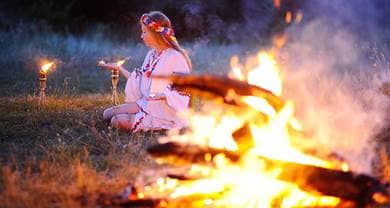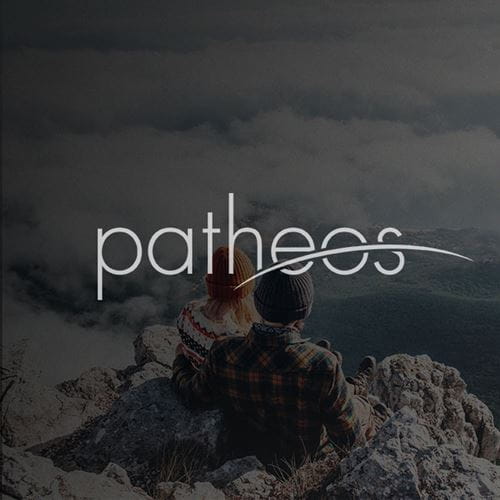- Trending:
- Forgiveness
- |
- Resurrection
- |
- Joy
- |
- Feminism
- |
- Afterlife

RELIGION LIBRARY
Paganism
Sacred Time
Ancient Pagan sacred sites, like Stonehenge in England or Newgrange in Ireland, often have an astronomical orientation, with key features of the site oriented toward specific dates of the year. For example, Stonehenge is oriented toward the sunrise of the summer solstice, while the doorway of Newgrange is oriented toward sunrise of the winter solstice. Sites like these suggest not only a high degree of astronomical and architectural sophistication among ancient Pagans, but also imply that the dates like the solstices may have had ritual significance to their cultures.
The Pagan movement that emerged in the 20th century draws on a variety of folkloric, mythological, and archaeological sources to establish its own sense of sacred time. As is always the case among Pagan religions, different traditions often observe different holy days. Wicca (religious witchcraft), the most widely practiced form of Paganism, offers the best example of Pagan sacred time.
Sacred time within Wicca is established by the cycles of the sun and the moon. Lunar cycles occur every 29 to 30 days, while a solar cycle occurs over the course of a year. The key events in a lunar cycle include the new moon and the full moon. Many Wiccan solitaries and groups perform rituals on the nights of the new and full moons, seeing those dates as particularly propitious for venerating the goddess as identified with the moon. Because the duration of menstrual cycles often is equivalent to the lunar month, many Wiccans understand the phases of the moon as symbolically attuned to the "phases" of the menstrual cycle. Thus, the full moon represents ovulation, and signifies a time of fecundity, creativity, and active engagement with the world; the new moon represents menstruation, and therefore is associated with rest and withdrawal from worldly activities for a time of reflection and renewal. Wiccan ceremonies can take these associations into account, with new moon rituals being more contemplative and full moon ceremonies more ecstatic or celebratory.
The solar cycle as observed by many Wiccan groups involves eight holidays, collectively known as "the Wheel of the Year." These holidays include the solstices, the equinoxes, and four seasonal agricultural festivals with roots in British and Irish mythology. The wheel of the year includes these festivals:
- Samhain, traditionally celebrated on or near October 31
- Yule, the winter solstice
- Imbolc, traditionally celebrated on or near February 1
- Ostara, the spring equinox
- Beltane, traditionally celebrated on or near May 1
- Litha, the summer solstice
- Lughnasadh, traditionally celebrated on or near August 1
- Mabon, the fall equinox
Several of these festivals have alternative names, sometimes from folkloric or even Christian sources: thus Samhain is also known as Hallowmas or Hallowe'en; Imbolc as Candlemas; Lughnasadh as Lammas; and Mabon as Michaelmas.
Like the lunar cycle, the wheel of year is rich with symbolism and mythology. Some traditions weave throughout the eight holidays a running narrative about the birth, life, and eventual death of the goddess, who over the course of the year is impregnated by her consort and gives birth to a sacred child. Another narrative associated with the wheel of the year involves a never-ending cycle of conflict between two mythic kings - the Oak King and the Holly King - who continually defeat each other at each solstice, the Oak King triumphing in the summer while the Holly King emerges victorious each winter.
Each of the agricultural festivals also has rich folklore associated with it. Samhain (the name literally means "summer's end") signifies the onset of winter and is associated with the end of harvest and the slaughtering of livestock to prepare for the cold season; thus it has traditionally been linked to death and to contact with ancestral spirits. Imbolc ("In the belly") celebrates the coming of spring and a time when ewes are lactating and pregnant with spring lambs. The celebration of spring reaches its apex with Beltane ("The fire of Bel"), a festival to mark the onset of summer and chronologically opposite of Samhain. As Samhain is a festival honoring death, Beltane is dedicated to the celebration of life and fertility. Finally, the onset of harvest is marked with Lughnasadh ("Lugh's festival"), marked by the first harvest and traditionally observed with games and other festivities. Incidentally, Bel and Lugh are the names of Celtic gods.
These holidays are not universally observed among all Wiccans, let alone all Pagans. Their popularity among many Wiccans and some other Pagans stems from their symmetry and the rich mythic and folkloric material associated with the festival days. In some locations traditional celebrations associated with these holidays that predate the onset of Paganism by many generations, continue to be celebrated. For example, the town of Padstow in Cornwall has elaborate May Day festivities each year that many scholars believe are vestigial remains of ancient religious observances. The Padstow May Day celebration has been re-created in Berkeley, California for a number of years-an example of contemporary Pagans drawing on folkloric practice for inspiration.
Study Questions:
1. Why do sites like Stonehenge and Newgrange have sacred significance?
2. Describe the Wiccan understanding of sacred time, in relation to the lunar calendar.
3. What is meant by the wheel of the year?










